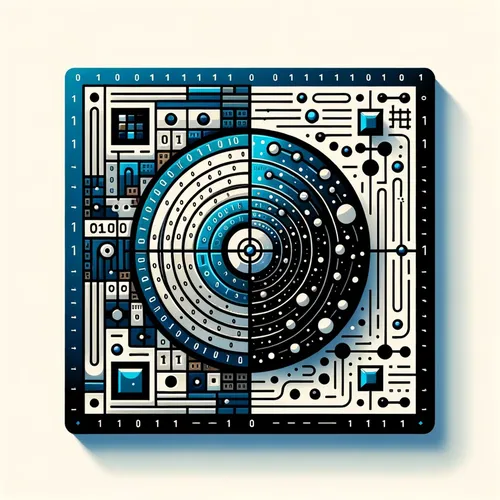Quantum Computing's Collaborative Leap: Uniting Qubits, Unleashing Potential
- Author
- Quiet. Please
- Published
- Sun 07 Sep 2025
- Episode Link
- https://www.spreaker.com/episode/quantum-computing-s-collaborative-leap-uniting-qubits-unleashing-potential--67663802
This is your Quantum Bits: Beginner's Guide podcast.
You’re listening to Quantum Bits: Beginner’s Guide. I’m Leo, your resident quantum computing specialist—and recent events have me more charged than a superconducting qubit at absolute zero. Just days ago, Oak Ridge National Laboratory unveiled a modular software blueprint designed to unite quantum computers with high-performance classical machines. It’s not just a toolkit; it’s a quantum-classical handshake that hints at a future where computation transcends current boundaries.
How does this make quantum computers easier to use? Imagine the daunting isolation of quantum devices—each system a lone island. But now, researchers are developing hybrid frameworks, letting quantum processors collaborate with classical giants like the Frontier supercomputer. The result? Problems deemed impossible are starting to yield—imagine weather simulations or drug discovery achieved with exponential improvements in accuracy and speed. This new software blueprint enables “performance portability,” so today’s quantum programs can keep running as hardware evolves—no more rewriting everything from scratch every time there’s a leap in technology. It’s adaptability, built in.
And speaking of leaping forward, the University of Chicago and its partners just secured $4 million from the NSF to develop the Quantum Advantage-Class Trapped Ion System, or QACTI. Their goal: a 256-qubit machine by 2033, with a smaller proof-of-concept within mere years. Seymour Goodman Professor Fred Chong and team want quantum machines not locked in exclusive labs, but available nationwide—even via the cloud. Suddenly, high-level quantum modeling for climate science, finance, or chemistry isn’t a privilege reserved for a few—it’s universal access.
Let’s get sensory: Picture a quantum lab humming with chilled circuits and ion traps, lasers brushing qubit arrays—every flicker a dance of probabilities. I see each experiment as a city: traffic patterns representing entanglement, uncertainty painted in neon across its skyline. Recently, a joint team in Osaka unveiled another breakthrough: observing “heavy fermions” in a quantum-critical state where electron lifetimes hit the fundamental Planckian time limit. That’s the quantum edge, where theory turns tangible, and every electron is tethered mentally and physically to its neighbor—a network of entanglement that could underpin future quantum architectures.
These advances are alive in the world, not just the lab. Just as real-world supply chains or weather predictions race to harness quantum computing power, quantum’s ability to unite disparate systems mirrors trends in society—collaboration, not isolation, drives progress. Even DARPA, in a new push, is funding heterogeneous quantum architectures that allow different kinds of qubits to interconnect. Such approaches make the quantum realm less forbidding—more puzzle, less mystery.
As funding surges and practical applications become everyday reality—medicine, finance, logistics—we teeter on the brink of a computational revolution. The difference between today and yesterday isn’t just more qubits, but quantum programming itself growing easier, more robust, and flexible—an ecosystem ready not just for specialists, but all curious minds.
If you’re bursting with questions or burning for a topic, email me at [email protected]. Don’t forget to subscribe to Quantum Bits: Beginner’s Guide. This has been a Quiet Please Production—for more, visit quietplease.ai. Until next time, keep thinking quantum, keep pushing boundaries.
For more http://www.quietplease.ai
Get the best deals https://amzn.to/3ODvOta
